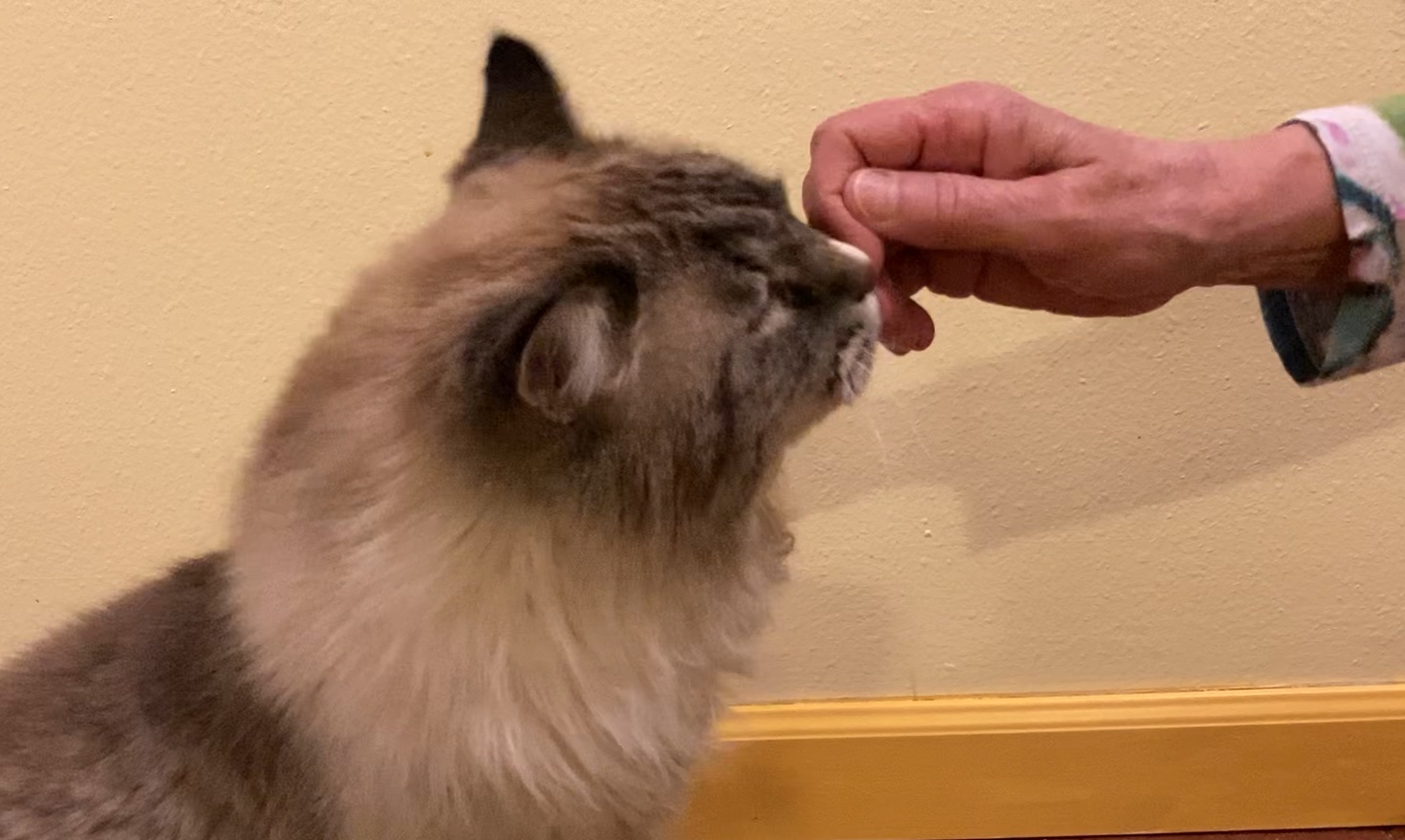
You’re watching TV with your cat on your lap, absentmindedly stroking her. Suddenly, out of the blue, she swats you and jumps down. You rub your hand and wonder, “What was that all about?”
There are few practical guidelines for interacting with cats. A research team conducted a study at the Battersea Dogs and Cats Home in the UK to remedy this. The study tested a simple set of Human-Cat Interaction (HCI) guidelines that aim to make cats more comfortable when they are interacting with us.
These practical guidelines for interacting with cats follow the acronym CAT (easy to remember). Here they are!
C is for Choice and Control
A is for Attention
T is for Touch
choice and control…
Our cats’ ancestors were solitary hunters. They had to look out for themselves – if they were injured, they could not hunt; no hunting meant no food.
Cats are accomplished hunters but they are also prey for larger predators, such as coyotes. Consequently, cats are “control freaks” – to survive, they need to be in control of their interactions with their environment.
Allow a cat to CHOOSE whether or not to interact with you.
- If you can, get on the cat’s level, offer your hand, and allow him to approach you.
- If the cat wants to be touched, she will rub against your hand. If she doesn’t lean into your hand, don’t pet her.
- Allow the cat to move away from you if he chooses; don’t follow him if he leaves.
- Allow the cat to control how much you stroke her. When stroking her, pause every 3–5 sec to see if she wants to continue – does she rub against you to ask for more? If not, let her take a break.
Attention….
Pay attention to the cat’s body language and behavior. The following signals indicate that the cat is done interacting with you.
- She turns her head or moves away from you.
- His ears become flattened or rotate backwards.
- She shakes her head.
- The fur on his back “ripples”.
- She licks her nose.
- He becomes still, and stops purring or rubbing against you.
- She sharply turns her head to face you or your hand.
- He suddenly starts grooming himself but only for a few seconds at a time.
- Her tail starts switching back and forth rapidly; usually the tail is horizontal or on the ground.
touch…
Think about where you are touching the cat.
- A friendly cat prefers to be touched at the base of his ears, around his cheeks, and under his chin.
- AVOID the base of her tail and tummy.
- If you touch the cat’s back, flank, legs, or tail–watch his body language (see above) to see if he is comfortable with this.
Trying out the practical guidelines for interacting with cats
In the Battersea study, testing was conducted in 2 sessions: a “control” session and a second session after the human participant watched a 5 minute video demonstrating the CAT guidelines.
In each session, both control and post-video, the human participant visited with 3 cats, spending 5 minutes with each cat.
In the control session, the participant was instructed to remain seated in the cat’s room and interact with the cat as he or she usually would. The session was recorded by video.
After watching the instructional video, the participant would visit with 3 more cats as before, except following the CAT guidelines.
A total of 535 observations were made.
For each observation, cat behavior and posture was assessed and rated; the human participants were scored on how closely they followed the CAT guidelines.
Did the practical guidelines for interacting with cats work?
Before CAT instruction:
Cats in the control visits displayed more instances of human-directed aggression and more behaviors associated with conflict than cats in the post-education visits.
After CAT instruction:
The human participants in the study started following the CAT guidelines and the cats displayed more friendly and positive behaviors than in the control visits.
So, back to the cat on your lap in front of the TV. She became tired of being petted and may have indicated this by flattening her ears and turning her head to give you a meaningful look but you were not paying attention!
- Let her Control the stroking (“ask” if she wants to continue)
- Pay Attention to her body language (rippling skin? twitching tail? “airplane” ears?)
- Touch her where she is comfortable being touched; if in doubt, stick with the base of the ears, the cheeks, and under the chin.
postscript
If you need to handle your cat and she’s not having it, try to make it worthwhile for her. Offer her a treat or a toy to put her in a positive emotional state.


1 thought on “Practical guidelines for interacting with cats”